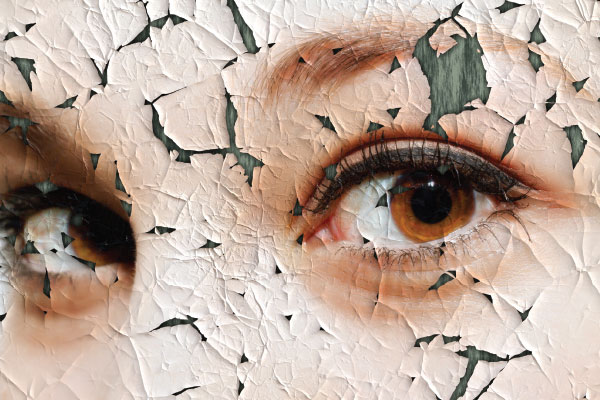Behnaz Sanjana asks: what gives your lipstick its colour? What makes that shampoo lather? How do our magic lotions and potions ultimately hurt us and our planet?
The skin is the largest organ of the human body and readily absorbs a significant percentage of everything you slather on it. It protects the internal organs and tissues as the body’s first barrier against the harmful elements of the external world – such as bacteria, moisture, heat, cold and toxic substances.
But the mammoth beauty industry that has permanently made its place on our bathroom shelves, dressing tables and in our mentality, may be wreaking havoc with our physiological systems, thanks to some questionable ingredients harboured in attractive tubs and tubes.
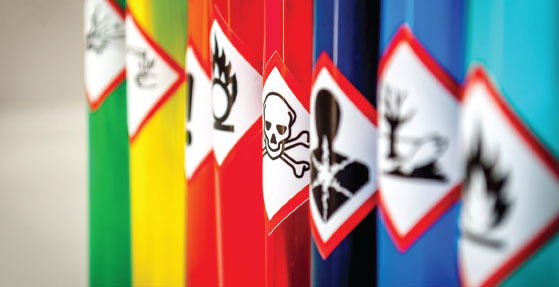
Just grab the store-bought personal care product closest to you – your shampoo, face wash, moisturiser or even the hand cream in your purse – and read the ingredients that your skin is absorbing every day. According to the Huffington Post, if you see the following, the alarm bells should start ringing:
Sodium lauryl sulfate (SLS) is responsible for the suds in your shampoo and soaps, and also hides in mascara and acne topicals. Besides being a skin, lung and eye irritant, SLS combines with other chemicals to form carcinogens that can also cause kidney and respiratory damage.
Parabens have oestrogen-mimicking properties that are associated with increased risk of breast cancer. They have been identified in biopsy samples from breast tumours and lurk in conventionally available make-up, body washes, deodorants, shampoos and facial cleansers, besides food and pharmaceutical products.
Synthetic colours are derived from petroleum or coal tar sources and are suspected to be a human carcinogen, a skin irritant and are linked to ADHD in children. The EU has banned their use.
Phthalates are used to increase the flexibility and softness of plastics. They go by the names dibutyl phthalate in nail polish, diethyl phthalate in perfumes and lotions, and dimethyl phthalate in hair spray. They are known to be endocrine disruptors and have been linked to increased risk of breast cancer, early breast development in girls and reproductive birth defects in males and females.
Formaldehyde is found in popular hair smoothing and straightening treatments as well as nail polish, conditioners, shampoos, cleansers and eye shadows, and has been linked to occupation-related nasal and nasopharyngeal cancers, allergic skin reactions and harm to the immune system.
Other chemicals found regularly in skin care products are toluene, which can cause foetal developmental damage; propylene glycol and triclosan, both skin irritants; and artificial fragrances. Sunscreens containing benzophenone, PABA, avobenzone, homosalate and ethoxycinnmate can cause cellular damage and cancer.
According begoodorganics.com, the average woman uses 12 products in a day, which amount to 168 ingredients, or around two kilograms of chemicals over a year.
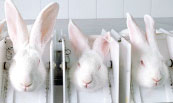 Many of them are untested, or, worse still, tested on innocent animals, and have been scientifically proven to cause autoimmune diseases, thyroid function disruption, respiratory issues, skin disease, liver, brain and immune system damage, development problems, male and female reproductive hormone dysfunction and foetal development issues.
Many of them are untested, or, worse still, tested on innocent animals, and have been scientifically proven to cause autoimmune diseases, thyroid function disruption, respiratory issues, skin disease, liver, brain and immune system damage, development problems, male and female reproductive hormone dysfunction and foetal development issues.
It’s not just about humans. Humane Society International, a global animal protection organisation working to ban animal-tested products from the international market, estimates that approximately 100,000-200,000 animals (rabbits, guinea pigs, hamsters, rats and mice) suffer and die for cosmetics every year around the world. Other animal welfare groups put the figure much higher than that.
The website http://www.hsi.org/ states that, typically, animal tests for cosmetics include skin and eye irritation tests, where chemicals are rubbed onto the shaved skin or dripped into the eyes of laboratory animals. These tests, including repeated oral force-feeding studies that last for weeks or months, can cause the animals considerable pain and distress, including blindness, swollen eyes, sore bleeding skin, internal bleeding and organ damage, birth defects, convulsions and death.
But don’t despair yet. There are ways to ensure that what you put on to your skin is wholesome and cruelty-free. One option is to patronise brands that do not test on animals – Bath&Body Works, The Body Shop, Aveda, Lush, Paul Mitchell, dermalogica, NYX and Urban Decay are a few that are available in Bahrain (though you may wish to check the policy of their parent companies). Made right in Bahrain, OrganiCare, offers all-natural, vegan and organic personal care and beauty products with a clear ‘no nasties’ policy.
But if you really want to go the whole mile, it’s not very difficult to make your own basic personal products. That way you know exactly what’s in them.
Dry Shampoo (Commercial dry shampoos can be pricey and contain things like isobutane, butane and propane.)
Source: wellnessmama.com
• 1/4 cup arrowroot powder or organic cornstarch OR for dark hair
• 2 tbsp arrowroot/cornstarch
• 2 tbsp cocoa powder
• Five drops of essential oil of choice (optional)
• An old make-up brush to apply
Put the drops of essential oil into the arrowroot or cornstarch and mix with a spoon. Store the mix in a small jar or old powder container. Apply with an old make-up brush to the roots or oily parts of your hair.
DIY Flaxseed Scrub
Adapted from Vegan Beauty Review on peta.org
• 1 tbsp flaxseed meal
• 2 tsp granulated vegan sugar
• 2 tbsp sweet almond, coconut, olive or jojoba oil
Add all the ingredients to a small jar and mix until well combined. Apply a small amount of the mixture to your face and gently scrub in a circular motion. Wash off with warm water and follow with your favourite vegan toner and moisturiser.
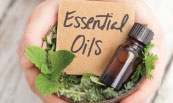 DIY Natural Deodorant Spray
DIY Natural Deodorant Spray
Adapted from Vegan Beauty Review on peta.org
• 2oz. witch hazel
• 12 drops favourite essential oil (sweet orange is recommended)
Add the witch hazel and essential oil to a spray bottle. Put the top on and shake well before spraying under your arms.
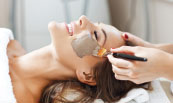 Black Forest Chocolate Cake Facial Mask
Black Forest Chocolate Cake Facial Mask
Source: Rodalesorganiclife.com
Top Tip: Cherry juice is useful for lightening skin and clearing up dark spots. Cocoa powder is antioxidant-rich, so it helps neutralise harmful free radicals and repairs skin cells. Good for all skin types.
• 3 large ripe cherries, pitted
• 1 tbsp kaolin clay
• 1 tbsp almond milk
• 2 tbsp unsweetened cocoa powder
In blender, purée cherries, clay, almond milk and cocoa powder until smooth. Spread mask all over damp cleansed facial skin. Keep on for 10 minutes. Rinse face with warm water and pat dry with a towel. Follow with your favourite toner and moisturiser. Cover and store any leftovers in the refrigerator for up to one week.

























